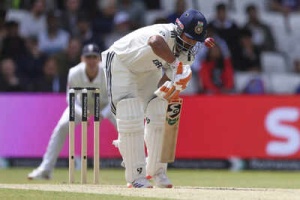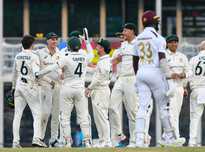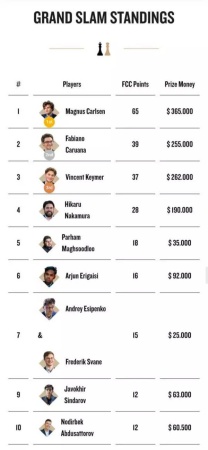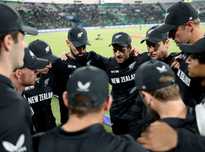Indian cricketer Suryakumar Yadav recently underwent surgery in Europe to address a sports hernia. The 34-year-old confirmed the procedure via his Instagram account, stating he is on the path to recovery after a successful operation. But what exactly is a sports hernia, and how does it differ from a typical hernia? Let's delve into the details of this injury.

A sports hernia, also known as athletic pubalgia, is a painful condition affecting the soft tissues in the lower abdomen or groin area. Unlike a traditional hernia, a sports hernia doesn't present a visible bulge. Instead, it involves strains or tears in the muscles, tendons, or ligaments around the groin, resulting in persistent pain that intensifies with sudden movements.
Athletes, such as Suryakumar Yadav, who participate in sports that demand sudden changes in direction, twisting motions, or high-impact forceful movements, are particularly susceptible to sports hernias. These movements are common in cricket (batting, fielding), soccer, and other similar sports.
The key difference between a sports hernia and a traditional inguinal hernia lies in the presentation. While inguinal hernias involve an organ or tissue pushing through a weakened muscle, creating a visible lump, a sports hernia involves tears or weaknesses in muscles or tendons without any noticeable protrusion. This makes sports hernias more challenging to diagnose, yet they can cause considerable pain and discomfort, especially during physical activity.
The primary symptom of a sports hernia is pain in the groin or lower abdomen. This pain might arise suddenly at the time of injury or develop gradually due to repetitive movements. Key symptoms to watch out for include:

Due to the absence of a bulge and the pain spreading across a broad area, pinpointing the exact location of the hernia can be difficult. The pain associated with the injury can also lead to stiffness and soreness post-exercise, hindering athletic performance.
Sports hernias result from repetitive movements that strain the muscles and tendons in the lower abdomen and groin. The injury occurs when these soft tissues are stretched or torn due to sudden pelvic twisting.
Treatment approaches for sports hernias depend on the severity of the injury. Common options include:
Avoiding activities that trigger pain, particularly twisting and sudden movements, is crucial for allowing the tissues to heal. However, this process may be lengthy.
A structured rehabilitation program focuses on strengthening the abdominal and hip muscles, enhancing flexibility, and addressing muscle imbalances. Physical therapy is often the first-line treatment.
Nonsteroidal anti-inflammatory drugs (NSAIDs) can help alleviate pain and inflammation, though they do not address the underlying issue.
If symptoms persist despite conservative treatment, surgery may be necessary to repair the torn tissues. Surgical options involve repairing or reinforcing the damaged tendons and muscles around the pubic bone. Surgery typically results in a favorable recovery and a gradual return to sports activities.
Newer articles
 Hetmyer's Heroics: Orcas Stun MI New York with Last-Ball Six in Record-Breaking MLC Chase
Hetmyer's Heroics: Orcas Stun MI New York with Last-Ball Six in Record-Breaking MLC Chase
 Android Users Face Critical Security Risks: Update Your Devices Now, Warns Government Agency
Android Users Face Critical Security Risks: Update Your Devices Now, Warns Government Agency
 Greg Chappell Hails Rishabh Pant's "Revolutionary" Batting, Likens Him to Gilchrist
Greg Chappell Hails Rishabh Pant's "Revolutionary" Batting, Likens Him to Gilchrist
 Dog-Sized Dinosaur Fossil Unearths New Insights into Prehistoric Life Alongside Giants
Dog-Sized Dinosaur Fossil Unearths New Insights into Prehistoric Life Alongside Giants
 West Indies Captain Chase Slams Umpiring After Test Loss, Demands Accountability
West Indies Captain Chase Slams Umpiring After Test Loss, Demands Accountability
 IRCTC's AI Chatbot, AskDisha 2.0, Streamlines Train Ticket Booking, Refunds & Information
IRCTC's AI Chatbot, AskDisha 2.0, Streamlines Train Ticket Booking, Refunds & Information
 Freestyle Chess India Event Scrapped Due to Sponsorship Issues; Carlsen Absence Confirmed
Freestyle Chess India Event Scrapped Due to Sponsorship Issues; Carlsen Absence Confirmed
 Moto G54 Gets Significant Price Drop in India: Check Out the New Affordable Price Tag
Moto G54 Gets Significant Price Drop in India: Check Out the New Affordable Price Tag
 New Zealand Cricket Announces Packed 2025-26 Home Schedule Featuring Australia, England, West Indies & South Africa
New Zealand Cricket Announces Packed 2025-26 Home Schedule Featuring Australia, England, West Indies & South Africa
 Converting JPG to PDF: A Comprehensive Guide for Preserving Image Quality and Ensuring Accessibility
Converting JPG to PDF: A Comprehensive Guide for Preserving Image Quality and Ensuring Accessibility